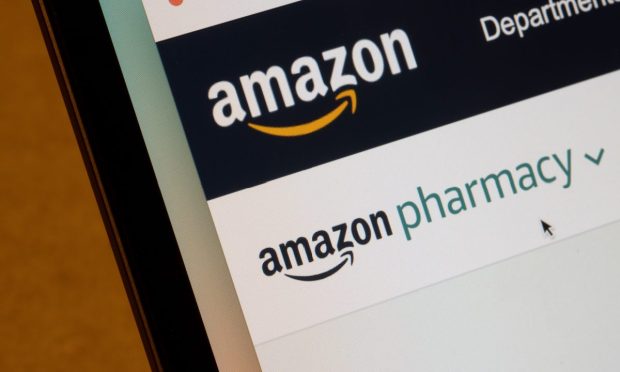Amazon and Walmart Duke It Out Over $808 Billion Healthcare Industry

Is it the rumble in the jungle? Or is it just Amazon and Walmart battling it out over new territory? Both players are making big moves to address a product every single consumer buys: healthcare.
While the world might be approaching the end of the pandemic, easy access to healthcare today continues to be an everyday battle, with Americans waiting an average of 26 days to see a doctor. To top that off, lack of insurance and high copay costs are shutting out many from accessing healthcare. These are key issues both Amazon and Walmart are looking to address in their own unique but oddly similar ways.
Who Has the Cheaper Prescription?
The two retail giants took their first steps in the healthcare industry with the launch of low-cost prescription services.
In February 2017, Walmart made news when it announced access to prescription refill service through its mobile app, enabling customers to pick up medication from more than 4,500 pharmacies. Adding to the convenience, the company’s pharmacy locations offered 30-day doses for just $4 and 90-day doses for just $10.
The company’s pharmacy business is today one of its core offerings.
Just a year after Walmart’s mobile pharmacy debut, Amazon threw its hat in the ring with the acquisition of PillPack. The newly acquired company later went on to serve as the foundation of Amazon Pharmacy and then the launch of the virtual health offering Amazon Clinic in 2022.
Building on its success, the company recently launched RxPass, an online service that provides patients who use the Amazon Pharmacy access to generic medications for $5 per month, delivered to their homes at no cost.
“Navigating insurance can be a maze and getting to the pharmacy a burden,” Dr. Vin Gupta, Amazon Pharmacy’s chief medical officer, said in a news release. “Sometimes that has led to poor outcomes,” Gupta added. “New medications don’t get filled, refills don’t get picked up, and patients suffer. Aspects of our healthcare system make what should be easy, difficult.”
While Amazon has made significant strides in the pharmacy space, it has also taken missteps.
The company launched a healthcare-specific venture called Haven in early 2018 with JPMorgan Chase & Co. and Berkshire Hathaway but shut it down in January 2021. The company also launched Amazon Care in 2019 but put the kibosh on it at the end of 2022.
Amazon and Walmart Get Physical (at Their New Health Centers)
Amazon and Walmart’s healthcare ambitions go beyond just dispensing low-cost prescription pills.
In 2022 Amazon made a $3.9 billion acquisition of One Medical, a membership-based primary healthcare provider that today operates 88 locations in 29 cities. Later in the year, the company also looked to acquire home health company Signify Health but ultimately lost its bid to CVS Health.
“We think health care is high on the list of experiences that need reinvention,” Neil Lindsay, senior vice president of Amazon Health Services, said at the time. “Booking an appointment, waiting weeks or even months to be seen, taking time off work, driving to a clinic, finding a parking spot, waiting in the waiting room then the exam room for what is too often a rushed few minutes with a doctor, then making another trip to a pharmacy — we see lots of opportunity to both improve the quality of the experience and give people back valuable time in their days.”
While it is yet to be seen exactly how Amazon will integrate with the provider, one can assume the eCommerce giant will be looking to leverage One Medical’s physical presence.
And while Amazon has turned to acquisitions to get its foot in the primary care business, Walmart is turning its stores into a one-stop destination for not just buying groceries, wiring money and getting a car oil change but also routine physician visits.
Just last week, Walmart revealed that it would be doubling the number of its health centers with 28 new locations in the first quarter of next year and more than 75 by the end of 2024.
“We know the cost and convenience of healthcare remains a barrier for many Americans, which is why we decided to bring our one-stop model of healthcare to these communities,” Dr. David Carmouche, Walmart’s senior vice president for omnichannel care, said in a news release.
“With 90% of the U.S. population located within 10 miles of a Walmart, Walmart Health is in a unique position to provide quality, affordable health and wellness services where our neighbors already live and shop.”
The company added that Walmart Health was being expanded to two new states — Arizona and Missouri — while furthering the company’s presence in Texas.
At the same time, the company has set its eyes on expanding access to healthcare services in its stores in Mexico and Central America, with the planned launch of a new health membership product that would give shoppers easy access to 500 doctor’s offices and 1,500 pharmacies in the region.
The Digital Healthcare Super App Future
According to “Healthcare In The Digital Age: Consumers See Unified Platforms As Key To Better Health,” a PYMNTS and Lynx collaboration, 90% of consumers want one app to manage their healthcare needs.
With that sentiment, Amazon has the edge here as Amazon dominates the eCommerce market while Walmart, fails to sing the same tune since their digital presence is relatively nascent — its 2017 acquisition of Jet.com at $3 billion has not moved the needle.
But healthcare is just one of the many fronts on which Walmart and Amazon are competing for more of the consumer’s spend. And as PYMNTS’ Karen Webster wrote late last month, it’s not just going to play out in the grocery aisle.
For all PYMNTS retail coverage, subscribe to the daily Retail Newsletter.

